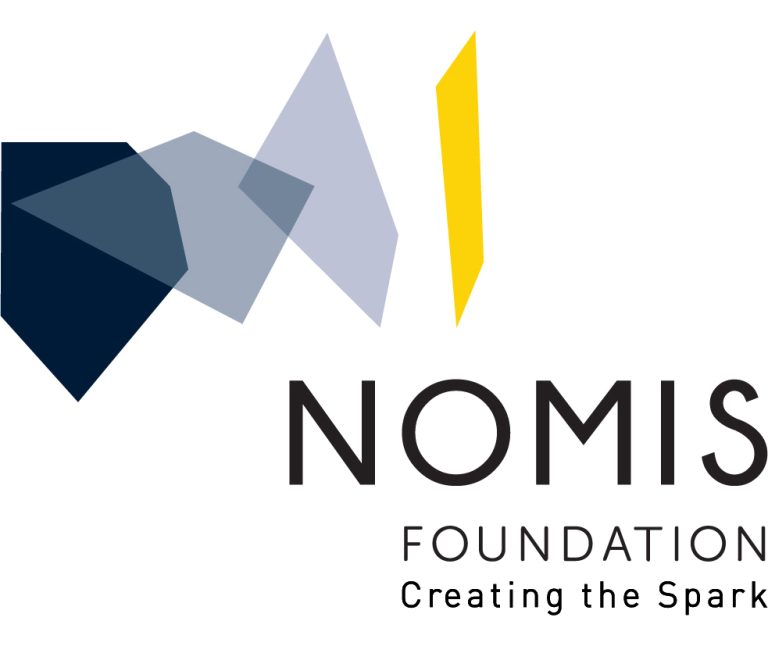In vivo genome editing via CRISPR/Cas9 mediated homology-independent targeted integration
Targeted genome editing via engineered nucleases is an exciting area of biomedical research and holds potential for clinical applications. Despite rapid advances in the field, in vivo targeted transgene integration […]
Biomolecular condensates at the nexus of cellular stress, protein aggregation disease and ageing
Biomolecular condensates are membraneless intracellular assemblies that often form via liquid−liquid phase separation and have the ability to concentrate biopolymers. Research over the past 10 years has revealed that condensates […]
Coaching from the sidelines: the nuclear periphery in genome regulation
The genome is packaged and organized nonrandomly within the 3D space of the nucleus to promote efficient gene expression and to faithfully maintain silencing of heterochromatin. The genome is enclosed […]
Clinical, pathophysiological and genetic features of motor symptoms in autosomal dominant Alzheimer’s disease
Owing to an early and marked deposition of amyloid-β in the basal ganglia, autosomal dominant Alzheimer’s disease could distinctly involve motor symptoms. Therefore, we aimed to assess the prevalence and […]
Interorgan crosstalk in pancreatic islet function and pathology
Pancreatic β cells secrete insulin in response to glucose, a process that is regulated at multiple levels, including a network of input signals from other organ systems. Impaired islet function […]
Colon cancer checks in when bile acids check out: The bile acid–nuclear receptor axis in colon cancer
Bile acids (BAs) are a class of hepatically derived metabolite-hormones with prominent roles in nutrient absorption, metabolic and immune homeostasis in the intestine. BAs are ligands for multiple nuclear receptors […]
Multiregion neuronal activity: the forest and the trees
The past decade has witnessed remarkable advances in the simultaneous measurement of neuronal activity across many brain regions, enabling fundamentally new explorations of the brain-spanning cellular dynamics that underlie sensation, […]
Deep brain optogenetics without intracranial surgery
Achieving temporally precise, noninvasive control over specific neural cell types in the deep brain would advance the study of nervous system function. Here we use the potent channelrhodopsin ChRmine to […]
Deep posteromedial cortical rhythm in dissociation
Advanced imaging methods now allow cell-type-specific recording of neural activity across the mammalian brain, potentially enabling the exploration of how brain-wide dynamical patterns give rise to complex behavioural states1–12. Dissociation […]
A CRISPR view on autophagy
Autophagy is a fundamental pathway for the degradation of cytoplasmic content in response to pleiotropic extracellular and intracellular stimuli. Recent advances in the autophagy field have demonstrated that different organelles […]
Characterizing super-spreaders using population-level weighted social networks in rural communities
Sociocentric network maps of entire populations, when combined with data on the nature of constituent dyadic relationships, offer the dual promise of advancing understanding of the relevance of networks for […]
Neanderthals on the Lower Danube: Middle Palaeolithic evidence in the Danube Gorges of the Balkans
The article presents evidence about the Middle Palaeolithic and Middle to Upper Palaeolithic transition interval in the karst area of the Danube Gorges in the Lower Danube Basin. We review […]
Wild cereal grain consumption among Early Holocene foragers of the Balkans predates the arrival of agriculture
Forager focus on wild cereal plants has been documented in the core zone of domestication in southwestern Asia, while evidence for forager use of wild grass grains remains sporadic elsewhere. […]
Tracking the transition to agriculture in Southern Europe through ancient DNA analysis of dental calculus
Archaeological dental calculus, or mineralized plaque, is a key tool to track the evolution of oral microbiota across time in response to processes that impacted our culture and biology, such […]
Multipronged dental analyses reveal dietary differences in last foragers and first farmers at Grotta Continenza, central Italy (15,500–7000 BP)
This paper provides results from a suite of analyses made on human dental material from the Late Palaeolithic to Neolithic strata of the cave site of Grotta Continenza situated in […]
Iron oxide nanoparticles for therapeutic applications
In nanomedicine, iron oxide nanoparticles are at an advanced stage, being commercialized for cancer treatment and iron-deficiency anemia treatment. Their therapeutic efficacy comes from their ability to target a tissue, […]
Molecular foundations of prion strain diversity
Despite being caused by a single protein, prion diseases are strikingly heterogenous. Individual prion variants, known as strains, possess distinct biochemical properties, form aggregates with characteristic morphologies and preferentially seed […]
Reprogramming neuroblastoma by diet-enhanced polyamine depletion
Neuroblastoma is a highly lethal childhood tumour derived from differentiation-arrested neural crest cells1,2. Like all cancers, its growth is fuelled by metabolites obtained from either circulation or local biosynthesis3,4. Neuroblastomas […]
Atlas of amnion development during the first trimester of human pregnancy
The amnion is a critical extra-embryonic structure that supports foetal development, yet its ontogeny remains poorly defined. Here, using single-cell transcriptomics, we identified major cell types and subtypes in the […]
Mesoscale properties of protein clusters determine the size and nature of liquid-liquid phase separation (LLPS)
The observation of Liquid-Liquid Phase Separation (LLPS) in biological cells has dramatically shifted the paradigm that soluble proteins are uniformly dispersed in the cytoplasm or nucleoplasm. The LLPS region is […]
Program-Based Strategy Induction for Reinforcement Learning
Typical models of learning assume incremental estimation of continuously-varying decision variables like expected rewards. However, this class of models fails to capture more idiosyncratic, discrete heuristics and strategies that people […]

